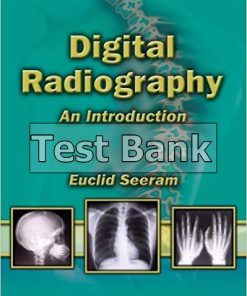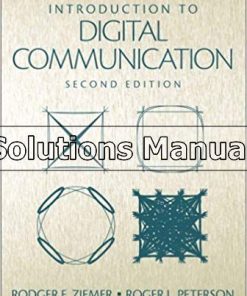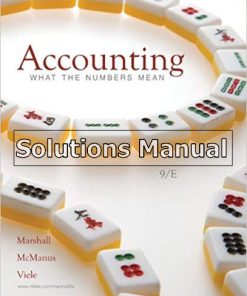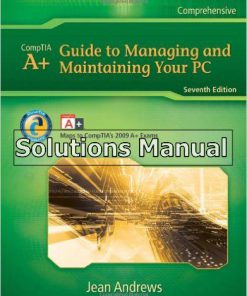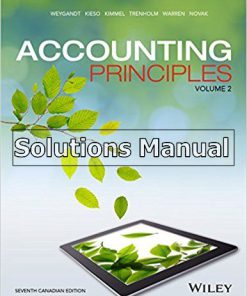Introduction To Digital Communications 1st Edition Pursley Solutions Manual
$26.50$50.00 (-47%)
Introduction To Digital Communications 1st Edition Pursley Solutions Manual.
You may also like
This is completed downloadable of Introduction To Digital Communications 1st Edition Pursley Solutions Manual
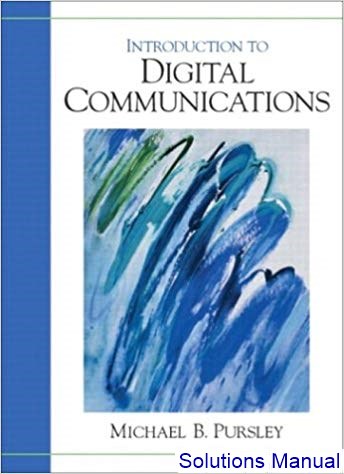
Product Details:
- ISBN-10 : 0201184931
- ISBN-13 : 978-0201184938
- Author:
This book provides an introduction to the basic concepts in digital communications for readers with little or no previous exposure to either digital or analog communications. The intent is to help learners develop a firm understanding of digital communication system engineering—and to enable them to conduct system-level design and analysis for digital communication systems of the future. As a result, the book emphasizes the basic principles of digital communications theory and techniques, rather than presenting specific technologies for implementation. Chapter topics include probability and random variables—review and notation, introduction to random processes, linear filtering of random processes, frequency-domain analysis of random processes in linear systems, baseband transmission of binary data, coherent communications, noncoherent communications, intersymbol interference, and spread-spectrum communication systems. For individuals preparing for a career in wireless communications system design.
Table of Content:
- Dedication
- Preface
- Acknowledgements
- Chapter 1: Introduction
- Abstract
- 1.1 Historical Review of Communications
- 1.2 Block Diagram of a Digital Communication System
- 1.3 Organization of the Book
- Chapter 2: Fundamental Aspects of Digital Communications
- Abstract
- Introduction
- 2.1 Why Digital?
- 2.2 Communications Modalities
- 2.3 Communication Network Models
- 2.4 Guided-Transmission Media
- 2.5 Radio Transmission
- 2.6 Transmission Impairments
- 2.7 Modulation Process
- 2.8 Fundamental Limits in Digital Transmission
- 2.9 Digital Communication Design Aspects
- Chapter 3: Signals, Systems, and Spectral Analysis
- Abstract
- Introduction
- 3.1 Basic Operations On Signals
- 3.2 Classification of Signals
- 3.3 Classification of Systems
- 3.4 Sinsuoidal Signals
- 3.5 Elementary Signals
- 3.6 Fourier Series
- 3.7 Fourier Transform
- 3.8 Time and Frequency Relations
- 3.9 Signal Transmission Through Systems
- 3.10 Communication Filters
- 3.11 Spectral Density and Autocorrelation Functions
- 3.12 Lowpass and Bandpass Signals
- Problems
- Chapter 4: Probability, Random Variables, and Random Processes
- Abstract
- Introduction
- 4.1 Probability
- 4.2 Random Variables
- 4.3 Random Processes
- Problems
- Chapter 5: Analog-to-Digital Conversion
- Abstract
- Introduction
- 5.1 Sampling Process
- 5.2 Quantization Process
- 5.3 Digital Pulse Modulation
- 5.4 Line Codes
- Problems
- Chapter 6: Baseband Digital Transmission
- Abstract
- Introduction
- 6.1 Baseband Binary PAM Transmission System Model
- 6.2 Intersymbol Interference
- 6.3 Optimum System Design for Noise Immunity
- 6.4 Baseband M-ary Signaling Schemes
- 6.5 Equalization
- Problems
- Chapter 7: Passband Digital Transmission
- Abstract
- Introduction
- 7.1 Optimum Receiver Principles
- 7.2 Binary Digital Modulation Schemes
- 7.3 Coherent Quaternary Signaling Schemes
- 7.4 M-ary Coherent Modulation Techniques
- 7.5 Orthogonal Frequency-Division Multiplexing
- Problems
- Chapter 8: Synchronization
- Abstract
- Introduction
- 8.1 Synchronization Levels
- 8.2 Scrambling
- 8.3 Phase-Locked Loop (PLL)
- 8.4 Carrier Recovery
- 8.5 Symbol Synchronization
- Problems
- Chapter 9: Information Theory
- Abstract
- Introduction
- 9.1 Measure of Information
- 9.2 Classification of Source Codes
- 9.3 Source Coding Theorem
- 9.4 Lossless Data Compression
- 9.5 Discrete Memoryless Channels
- 9.6 Channel Coding Theorem
- 9.7 Gaussian Channel Capacity Theorem
- Problems
- Chapter 10: Error-Control Coding
- Abstract
- Introduction
- 10.1 Errors
- 10.2 Error-Detection Methods
- 10.3 Automatic Repeat Request (ARQ)
- 10.4 Block Codes
- 10.5 Convolutional Codes
- 10.6 Compound Codes
- Problems
- Chapter 11: Communication Networks
- Abstract
- Introduction
- 11.1 Multiplexing
- 11.2 Duplexing
- 11.3 Multiple Access
- 11.4 Random Access
- 11.5 Controlled Access
- 11.6 Wired Communication Networks
- 11.7 Network Security and Cryptography
- Problems
- Chapter 12: Wireless Communications
- Abstract
- Introduction
- 12.1 Radio-Link Analysis
- 12.2 Frequency Reuse
- 12.3 Mobile-Radio Propagation Characteristics
- 12.4 Diversity
- 12.5 Diversity-Combining Methods
- 12.6 Emerging Wireless Communication Systems
- Problems
- Appendix: Analog Continuous-Wave Modulation
- Introduction
- A.1 Analog Continuous-Wave (CW) Modulation
- A.2 Amplitude Modulation
- A.3 Frequency Modulation
- A.4 Amplitude Nonlinearity in Analog CW Modulation
- A.5 Noise in Analog CW Modulation
- A.6 Commercial Radio Broadcasting
- A.7 Comparison of Analog CW Modulation Schemes
- Summary and Sources
- List of Acronyms and Abbreviations
- Index
People Also Search:
introduction to digital communications pursley
introduction to digital communications 1st edition pursley
introduction to digital communications
introduction to digital communications 1st edition
introduction to digital communications 1st edition download scribd
introduction to digital communications 1st edition solution manual download pdf





